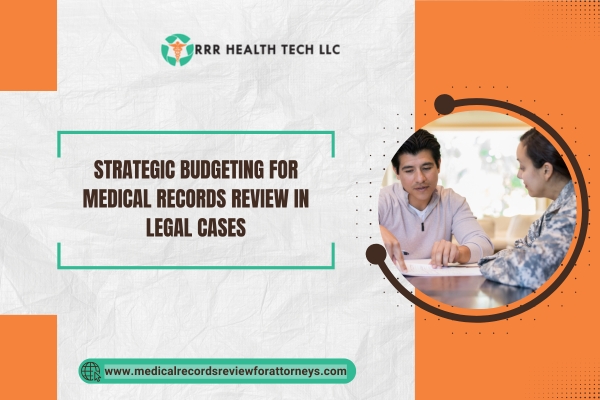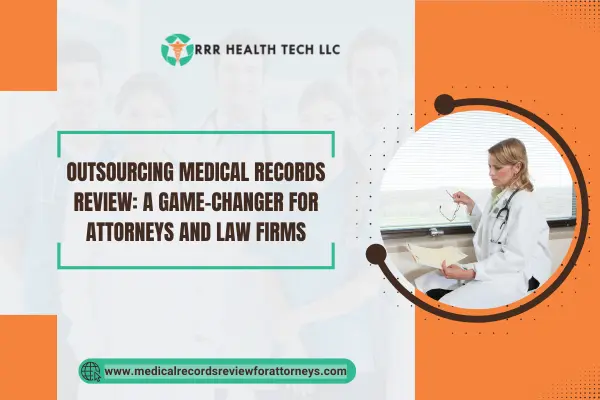
Introduction
For lawyers, be it medico legal disputes concerning malpractice, personal injuries, or product liability, budgeting for medical records review services is critical, This article sheds light on legal practices for budgeting purposes for medical records reviewing, expected costs involved, procedures, and time frames in which medical records can be reviewed and what areas need attention in the year 2024.
Understanding Medical Records Review
What is Medical Records Review?
This process involves taking an in-depth approach to a patient’s medical history, and their treatment plans. It also includes looking into the other relevant documents that are crucial to establishing the facts of a case, the quality of care received, or the duty that was breached.
Why is Medical Records Review Important?
They are the best source of evidence that can be used in a court case. Injuries can be substantiated, and the standard of injuries can be supported as well. Accurate analysis of medical records can aid in winning cases hence attorneys are supposed to set aside resources for this particular task.
Key Components of Budgeting for Medical Records Review
1. Identifying the Scope of Review
Determining Case Complexity
It is determined that the degree of difficulty of the case determines the review scope for the medical records. Take into consideration:
• Medical records volumes
• Participating medical specialists and households
• Legal parameters if any
2. Estimating Costs
Breakdown of Costs
When preparing a budget for the review of the medical records, it is advisable that the lawyers take into consideration the following cost elements/cost structure:
- Hourly Rates: The bulk of the medical record review services are charged on an hourly basis. Depending on the skills of the reviewers, the rates may change.
- Flat Fees: Certain companies set flat rates for a specified service, allowing some control over the budget.
- Other Expenses: Locating records may involve additional costs, copy fees, or administrative expenses.
3. Allocating Resources
Internal vs. External Review
Lawyers have to decide on performing the review internally or contracting the service to a professional review company. Both have their advantages and disadvantages:
- Internal review: Professional skill might be lacking, and it could be time-consuming but the company will incur lower expenses.
- Employed professionals: Even though the spending is over this is a better service and these people are qualified.
4. Planning for Contingencies
Unexpected Costs
The legal field is filled with uncertainties, and it would be unwise to not save up a part of the budget for costs that may be added during the process regardless of whether it is for more records, or hiring help.
Strategies for Effective Budgeting
Conducting a Proper Assessment
Do not start the planning process before analyzing the case and its needs thoroughly to determine the requirements for the case. This would assist in providing more precise figures for the requirements.
Investing in Technology
With the rapid advancements in technology, investing in systems that allow for a streamlining of the review of medical records would end up paying off greatly. Reducing the timing along with the costs that stem from manual reviews is one of the more common uses these tools serve.
Building Relationships with Vendors
Sustain an honest and healthy relationship with the medical records review services providers. Make your expectations clear in regards to the time period required to complete it, the end result, and the costs to prevent any potential misunderstanding or overspending.
Reviewing and Modifying the Jar with Changeable Pieces
Make it a habit and routine to continuously review the budget that is set throughout the duration of the legal case. As time passes the requirements may change and new pieces may be added, altering the initial budget.
Case Studies
Case Study 1: Medical Malpractice Lawsuit
Overview of the Case
Recently a medical negligence case was discussed whereby an attorney represented a patient suffering severe complications during surgery. The case rested upon the standard of care provided by the medical team.
Challenges
Bottlenecks were encountered during the procurement of the thorough record of health care from more than one provider leading to time delays and cost escalation.
Solutions
In conjunction with a medical records review service, the attorney was able to pull together and sort the necessary records effectively. A report detailing the care inappropriate gave the service a professional business purpose.
Compensation
This investment in the detailed review and report proved worth it because it facilitated the attorney in negotiating good settlements for the client.
Case Study 2: Personal Injury Claim
Overview of the Case
The car accident attorney defended a client, who was injured in a vehicular collision, and whose vehicle’s occupant alleged multiple medical conditions that already existed contributed to the injuries.
Challenges
The attorney needed to convince the court there was a reasonable medical condition caused solely by the sustained injuries and not pathological ones, therefore extensive assessment of the client’s history was necessary.
Solutions
The attorney utilized a medical records review service to analyze the client’s past medical records and identify relevant information. The service provided a comprehensive summary that effectively countered the opposing party’s claims.
Compensation
The successful presentation of evidence led to a significant compensation package for the client, highlighting the critical role of medical records review in personal injury cases.
Conclusion
Allocating resources for medical records review is an important practice for lawyers dealing with highly complicated cases. Practitioners together with their clients are capable of improving the outcome of cases due to the understanding of the cost items, the planning of the measures needed to be put in place and the use of appropriate services for budgeting. With the ever changing atmosphere of the medical records review, keeping abreast with the changes in trends and best practices will be very important for achieving the goals set out in 2024 and in the future.


